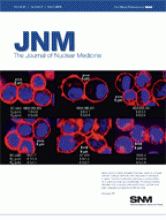Abstract
Targeted contrast-enhanced ultrasound imaging is increasingly being recognized as a powerful imaging tool for the detection and quantification of tumor angiogenesis at the molecular level. The purpose of this study was to develop and test a new class of targeting ligands for targeted contrast-enhanced ultrasound imaging of tumor angiogenesis with small, conformationally constrained peptides that can be coupled to the surface of ultrasound contrast agents. Methods: Directed evolution was used to engineer a small, disulfide-constrained cystine knot (knottin) peptide that bound to αvβ3 integrins with a low nanomolar affinity (KnottinIntegrin). A targeted contrast-enhanced ultrasound imaging contrast agent was created by attaching KnottinIntegrin to the shell of perfluorocarbon-filled microbubbles (MB-KnottinIntegrin). A knottin peptide with a scrambled sequence was used to create control microbubbles (MB-KnottinScrambled). The binding of MB-KnottinIntegrin and MB-KnottinScrambled to αvβ3 integrin-positive cells and control cells was assessed in cell culture binding experiments and compared with that of microbubbles coupled to an anti-αvβ3 integrin monoclonal antibody (MBαvβ3) and microbubbles coupled to the peptidomimetic agent c(RGDfK) (MBcRGD). The in vivo imaging signals of contrast-enhanced ultrasound with the different types of microbubbles were quantified in 42 mice bearing human ovarian adenocarcinoma xenograft tumors by use of a high-resolution 40-MHz ultrasound system. Results: MB-KnottinIntegrin attached significantly more to αvβ3 integrin-positive cells (1.76 ± 0.49 [mean ± SD] microbubbles per cell) than to control cells (0.07 ± 0.006). Control MB-KnottinScrambled adhered less to αvβ3 integrin-positive cells (0.15 ± 0.12) than MB-KnottinIntegrin. After blocking of integrins, the attachment of MB-KnottinIntegrin to αvβ3 integrin-positive cells decreased significantly. The in vivo ultrasound imaging signal was significantly higher after the administration of MB-KnottinIntegrin than after the administration of MBαvβ3 or control MB-KnottinScrambled. After in vivo blocking of integrin receptors, the imaging signal after the administration of MB-KnottinIntegrin decreased significantly (by 64%). The imaging signals after the administration of MB-KnottinIntegrin were not significantly different in the groups of tumor-bearing mice imaged with MB-KnottinIntegrin and with MBcRGD. Ex vivo immunofluorescence confirmed integrin expression on endothelial cells of human ovarian adenocarcinoma xenograft tumors. Conclusion: Integrin-binding knottin peptides can be conjugated to the surface of microbubbles and used for in vivo targeted contrast-enhanced ultrasound imaging of tumor angiogenesis. Our results demonstrate that microbubbles conjugated to small peptide-targeting ligands provide imaging signals higher than those provided by a large antibody molecule.
Footnotes
-
COPYRIGHT © 2010 by the Society of Nuclear Medicine, Inc.







